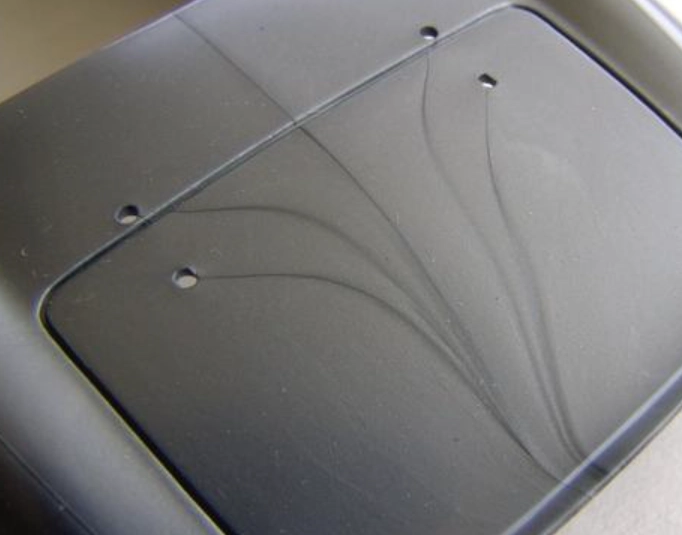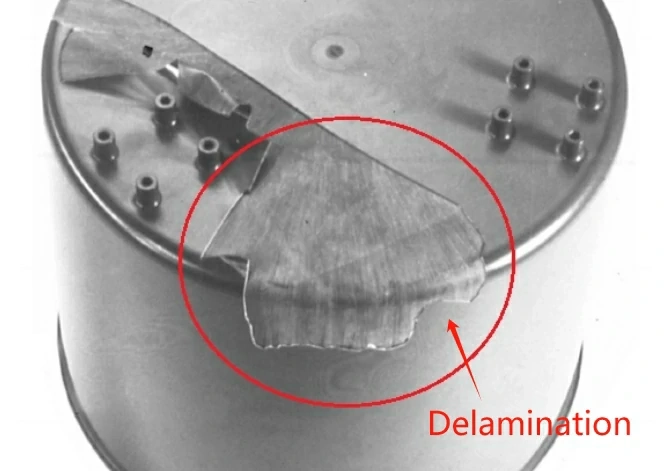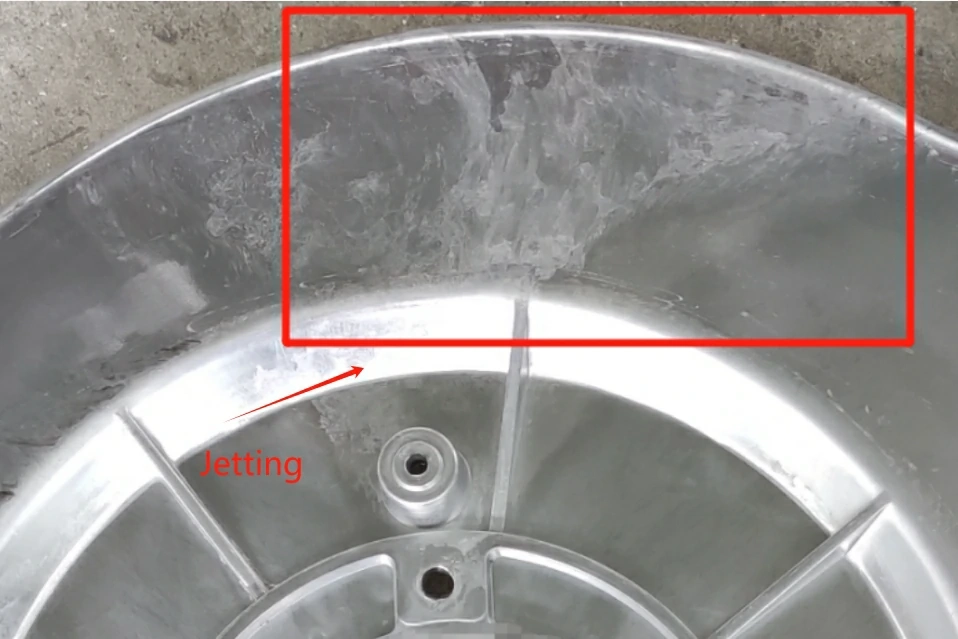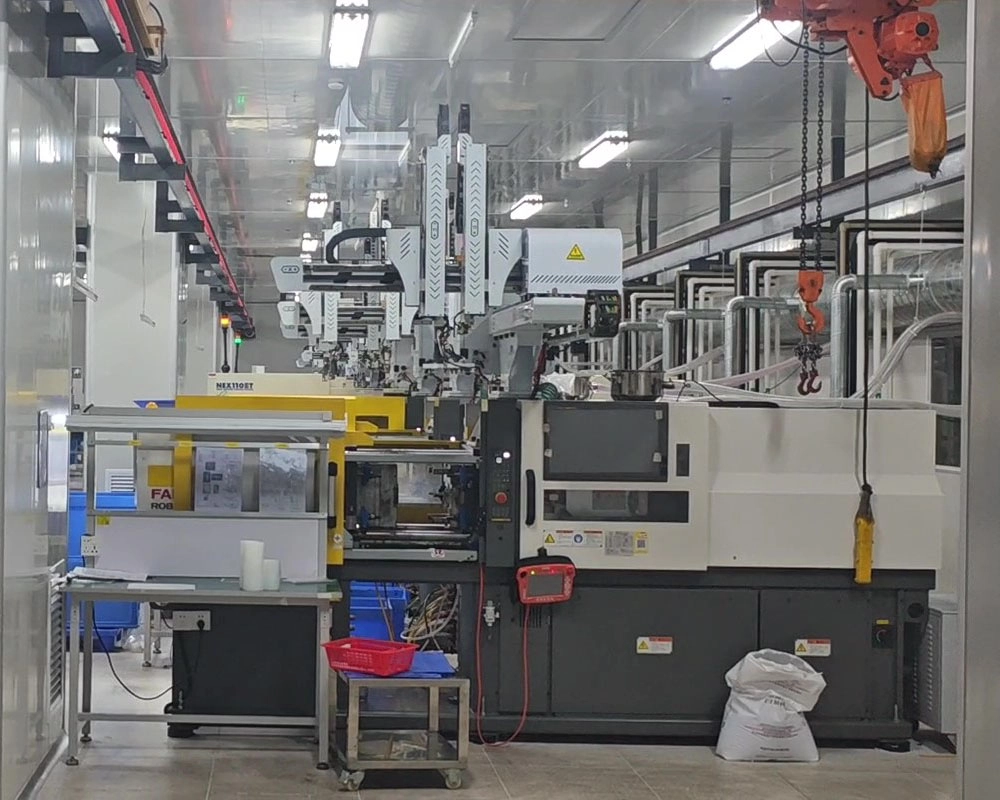Flow Lines
Flow lines are streaks or odd-colored patterns on a part’s surface. They happen when molten plastic moves at different speeds in the mold. This causes the plastic to harden unevenly. It looks bad and may show problems in the molding process. It often means the injection speed or pressure is too low.
To stop flow lines, keep wall thickness even. Place the gate in a thin part of the mold. This helps reduce flow lines.

Sink Marks
Sink marks are dents or dips in thick parts of a piece. Thick areas cool slower. The inner parts shrink faster than the outer ones. This causes uneven shrinking.
This happens due to short cooling time or uneven walls. Give the plastic more time to cool in the mold. Or reduce the thickness of thick walls. This helps cool evenly. In design, use proper rib and wall sizes to avoid this issue.
Surface Delamination

Delamination makes a part’s surface split into thin layers. These layers look like peelable coatings. They’re caused by contaminants in the material that don’t mix with the plastic. This creates weak spots.
Using too much mold release agent can also cause it. To fix and prevent delamination, raise mold temperatures. Adjust the ejection system to use less mold-release agent. Dry materials before molding to avoid this problem.
Weld Lines
Weld lines, or knit lines, show where two flows of molten plastic meet in the mold. If the flow’s temperature isn’t right, the flows don’t bond well. This leaves a visible line.
This weakens the part. To prevent it, raise the molten plastic’s temperature. Increase injection speed and pressure. Use lower-viscosity resins or remove mold partitions to help flows bond better.
Short Shots
Short shots happen when plastic doesn’t fully fill the mold. This makes incomplete, unusable parts. Narrow or blocked gates, trapped air, or low injection pressure can cause this.
To fix it, redesign gates or add vents. Raise mold temperature. Add more vents to let air escape. This helps prevent short shots.
Warping
Warping is when a part twists or bends during cooling. Uneven cooling creates stresses in the material. This happens due to uneven or poor mold cooling.
To avoid warping, cool the mold slowly and evenly. Keep wall thickness the same to help plastic flow in one direction. Be careful with semi-crystalline materials, as they can warp more.
Jetting

Jetting happens when a stream of plastic enters the mold and starts hardening before the mold fills. This leaves squiggly patterns on the part’s surface.
Lower injection pressure for slower filling. Increase mold and plastic temperature to keep it from setting too soon. Place gates properly to reduce jetting.
Prevent Injection Molding Defects and Causes
Injection molding makes plastic parts fast and repeatably. But it needs care in design and production to avoid common problems.
Pick a partner like Silkbridge. They know injection molding defects and how to fix them. Their services include production and design help to catch issues early.
Trust Silkbridge for Precision Plastic Injection Molding

At Silkbridge, we focus on precision and quality in plastic injection molding. We have over 30 CNC machines with tolerances up to 0.01 mm (0.0004 inches). This ensures super accurate parts.
Our molds are made to tight standards. They work for complex designs. We use high-precision EDM machines from Sodick for tricky shapes that regular machines can’t do.
Our facility has 100 modern injection molding machines, from 180 to 1200 tons. This supports big production for industries like cars and medical devices.
Silkbridge uses robotic automation for steady results. We store materials in controlled spaces to avoid moisture issues like delamination or short shots.
Our quality checks include CMM inspections at every step, from raw materials to final packaging. This ensures every part is perfect.
- WhatsApp: +86 18122838771
- Phone: +86 18122838771
- Email:contact@silkbridgeltd.com
FAQ
What causes most injection molding defects?
Problems come from bad design, production mistakes, poor quality checks, uneven materials, or wrong machine settings.
How do I fix sink marks?
Reduce wall thickness. Increase cooling time in the mold. Or improve pressure during filling.
What’s important when designing molds?
A good mold design boosts part quality, cuts waste, speeds production, and prevents defects like warping or jetting.
Can Silkbridge handle medical-grade components?
Yes. We have a sealed area for medical-grade plastic parts. It meets strict hygiene standards with cleanroom setups.
Why choose Silkbridge?
Our large production, advanced robots, precise CNC and EDM tools, and strict quality checks make us great for businesses needing top plastic parts.


